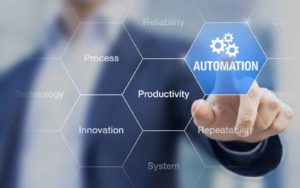Is it possible that paper and PDF EOBs are making a comeback?
It comes as a surprise to many in the industry, but market adoption of electronic EDI 835 files as a replacement for EOBs is moving at a sloth’s pace and even decreasing — from 56% to 48% between 2017 and 2018 before a modest rise of 3% between 2018 and 2019 (2019 CAQH Index). At the same time, paper-originated volumes and PDF versions of EOBs via payer portals are increasing.

Source: 2019 CAQH Index
While there has been some progress, revenue cycle vendors are being forced to accept the fact that full adoption of ACH and EDI 835 files is a pipe dream — at least for the foreseeable future. In the meantime, healthcare organizations are left dealing with viewing payer portals and scanning/keying from paper EOBs.
The Pain of Paper-Originated Payments and Remits
Too many healthcare organizations have learned to ignore the pain of PDF EOBs, paper EOBs and checks. However, you’ll probably recognize these points:
-
- Inaccuracy in the form of posting and billing errors that directly impact patients
- Additional process demands from managing workflows via internal or external lockbox
- Increased labor needs in terms of staffing and management
- Elevated costs from keying data from paper and PDF
- A lack of scalability and automation around training processes
- Severe limitations in using data downstream because paper blocks data flow to downstream BI systems, leaving them missing critical reporting data, impeding efforts to maximize collections
The Most Effective Treatment: Automation
The best treatment for the paper and PDF EOB problem is automation.
Automation addresses the pain points for revenue cycle vendors, providers, clearinghouses, lockbox processors, and patients!. But how can automation be applied to electronify these documents?

The answer is Hybrid Electronification which includes:
- An AI-based extraction of field data
- It learns where to look for field data from the layouts of thousands of EOBs.
- Has demonstrated remarkable accuracy with dollar amount accuracy averages around 99.9%+ and overall accuracy for all fields exceeding 99%.
- Ingestible data for downstream consumption for denial management, 3rd party reporting, and BI solutions.
- Scalability, drastically reducing the training demands required for humans.
The Prescription: Access EOB
The story of Catch21 is a case study in using automation to enable hybrid electronification and turn paper EOBs into a strategic advantage. See video.
Catch21 expanded its service bureau offering into a medical lockbox and RCM servicing company, working with banks and providers alike. They now have image capture in multiple locations, they’re experiencing record levels of data normalization, and their data analytics not only tracks at the hospital and clinical level but is headed toward provider-level efficiency Learn more about Catch 21 and their use of Hybrid Electronification.
They did this by leveraging Access EOB. Access EOB Conversion is a tool that extracts data from scanned images or PDF documents created from paper-based EOBs and EOPs. The resulting output is an EDI 835 Electronic Remittance Advice (ERA) files that are now ready for cash posting in practice management (PM) or hospital information systems (HIS) but also — are a building block of Hybrid Electronification.
